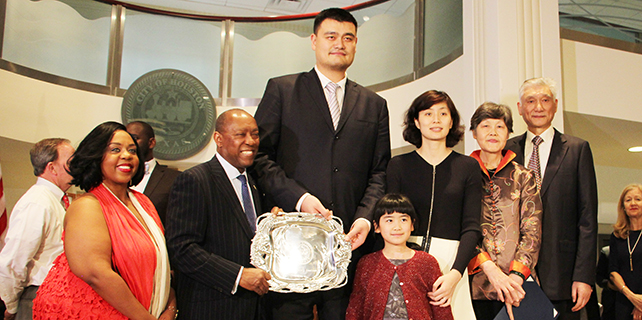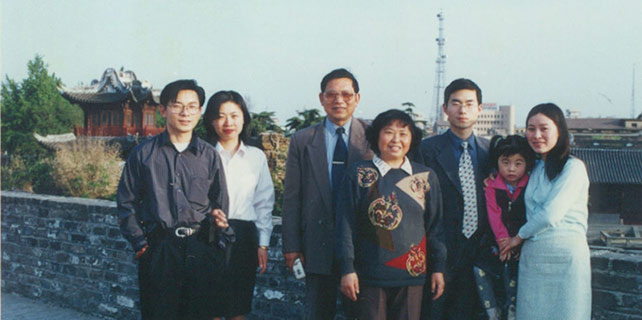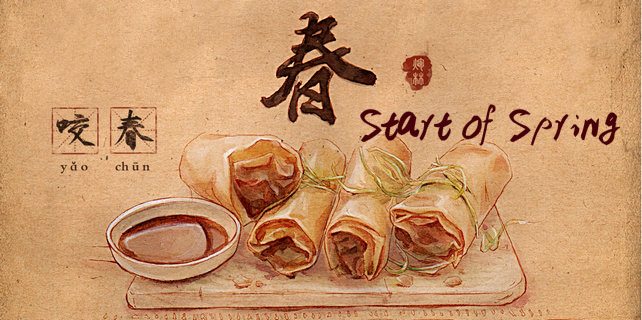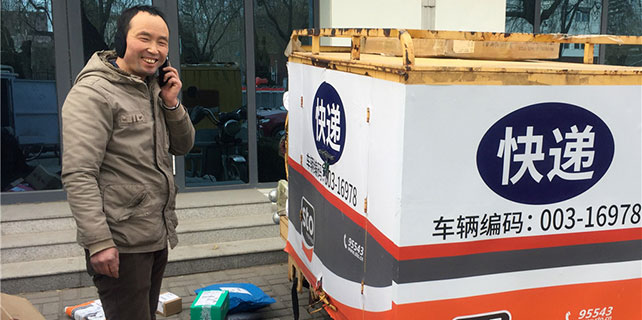Giving historical relics a new lease of life
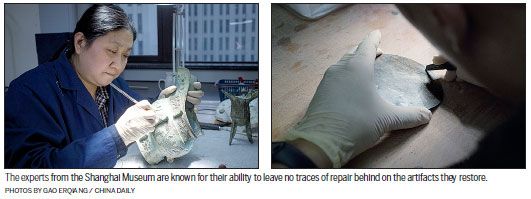
A documentary titled Masters in the Forbidden City that was recently screened in China sheds light into the intriguing craft of restoring precious relics in the Imperial Palace.
The two-part documentary, comprising a feature film and a 3-episode television series, was listed as one of the top 10 documentaries on Douban.com, a major Chinese arts and culture portal.
The program has also propelled some of the personalities on screen to fame. Wang Jin, of the restoration experts featured in the show, has since the documentary's release been invited to numerous television talk shows.
What is not mentioned in the documentary, however, is that many of these esteemed craftsmen were from the Shanghai Museum back in the 1950s.
According to Wu Laiming, head of the conservation center of the Shanghai Museum, the institution opened its first restoration workshop in 1958 and had brought together renowned craftsmen from Suzhou and Yangzhou, two cities famous for the restoration of Chinese paintings. The following year, a group of these craftsmen were seconded to the Palace Museum in Beijing and they went on to build themselves an illustrious career in the Forbidden City.
The restoration skills of the Shanghai Museum's craftsmen are not just coveted in the country. Established museums all over the world, such as the British Museum, the Hermitage Museum in Russia and the Freer Gallery of Art in the United States, have worked with restoration experts from the Shanghai Museum to rejuvenate their collections of Chinese art.
The Shanghai Museum takes great pride in the quality of their restoration works. And such is their commitment to perfection that new craftsmen who join the institution need to undergo eight years of apprenticeship before they can operate independently.
Experts from the Shanghai Museum would painstakingly source for materials and colors most identical to the one used in the artwork before masterfully blending them in. They are so skilled in their craft that people aren't able to find traces of the restoration when their work is complete.
Chinese paintings and calligraphy works can be restored multiple times and they can remain in good condition for more than a century, depending on the quality of the restoration work and the storage conditions.
Art restoration is a controversial topic in the international museum community. Some Western museums argue that the defects should not be corrected as any addition would render the artwork counterfeit. Some also believe that a restored artwork that looks too perfect might be mistaken as a fake.
"But you see, when people restore ancient murals in cathedrals, the images are restored as well. They would not leave an image incomplete and consider the work accomplished," said Chu Hao, a mounting artist and restoration expert from Shanghai Museum who specializes in Chinese paintings and calligraphy works.
Chu also emphasized that the techniques used by the craftsmen at Shanghai Museum do not compromise the integrity of the relic because the restoration work is reversible and leaves no mark on the original.
Zhang Peichen, a restoration craftsman for bronze artworks at the Shanghai Museum, argued that the restoration work is undetectable "only because you fail to detect it". He said that with the right equipment and technology, the restored areas can be identified and undone without damaging the artwork.
According to Wu, the museum relies on state-of-the-art technology to aid in the restoration process. For instance, some of the pigments used in the original artwork are no longer available in the modern age, so experts use technology to determine the best possible alternative.
Apart from restoration works, the Shanghai Museum also provides consultancy on museum design, management and measures to protect artworks against earthquakes.
"Conservation and protection also means taking precautions ahead of time. For example, there are different types of rust on metal. Some protect the metal from further erosion while others are contagious and will speed up the erosion," said Wu.
"Now there are scientific methods we can use to find the best solutions to such problems."
Due to the rapid advancement of technology and strong government support over the last decade, the conservation and protection departments in China's museums have achieved much progress, added Wu.
In 2015, the Shanghai Museum launched a new conservation center that is equipped with hi-tech equipment, such as the country's largest CT scanner which enables researchers to perform intricate examinations of an artwork.








